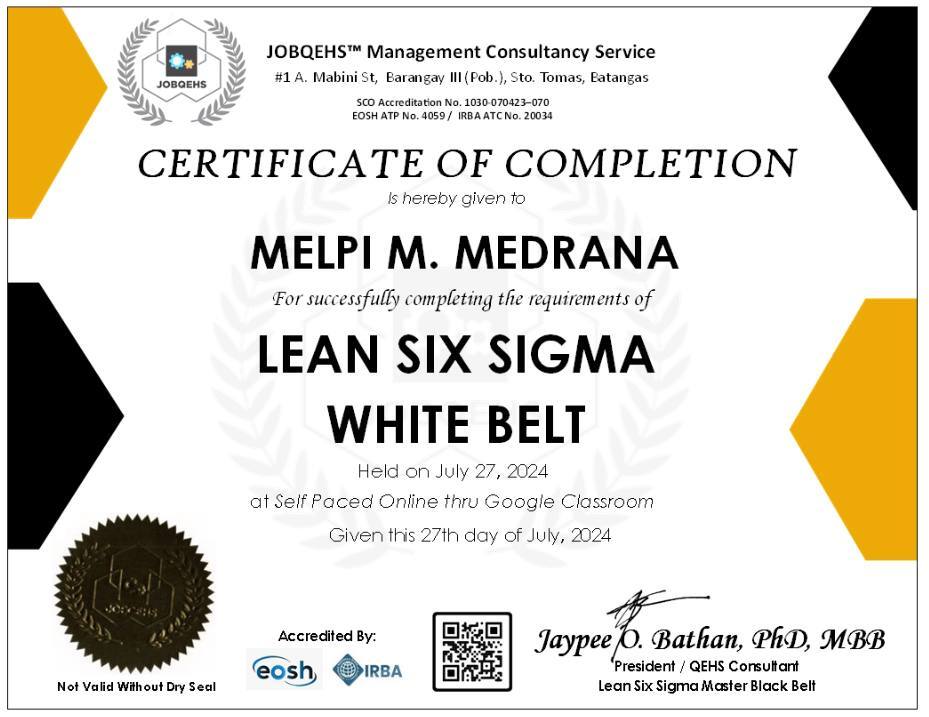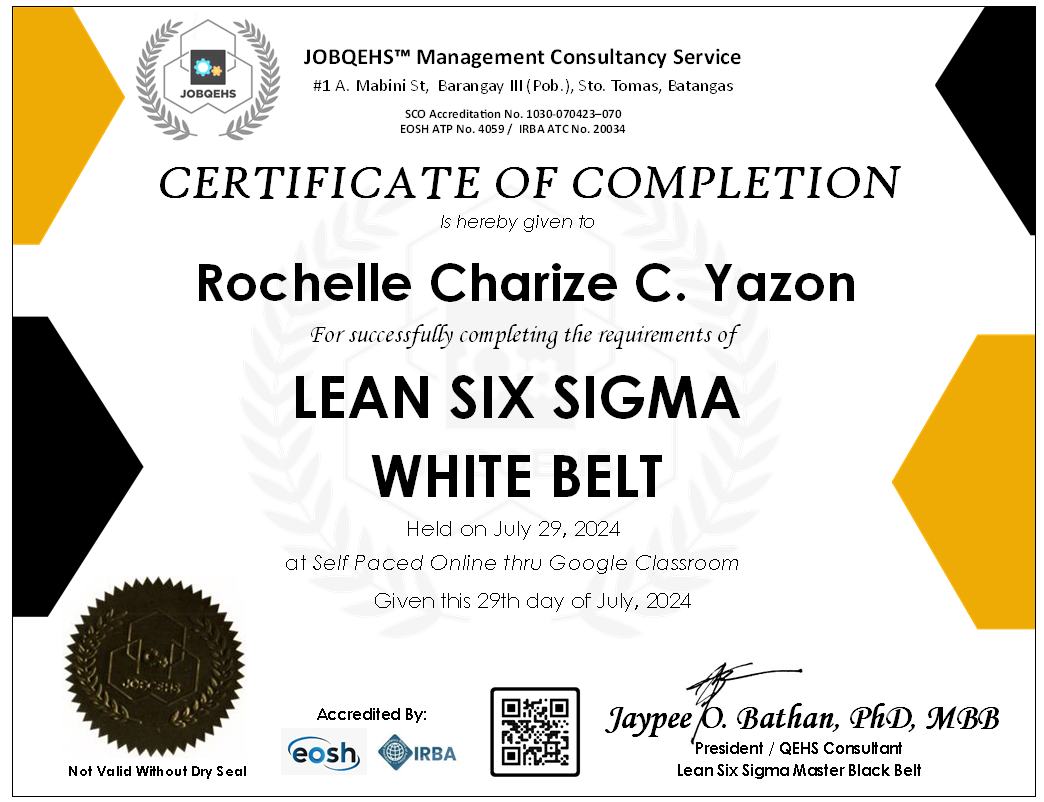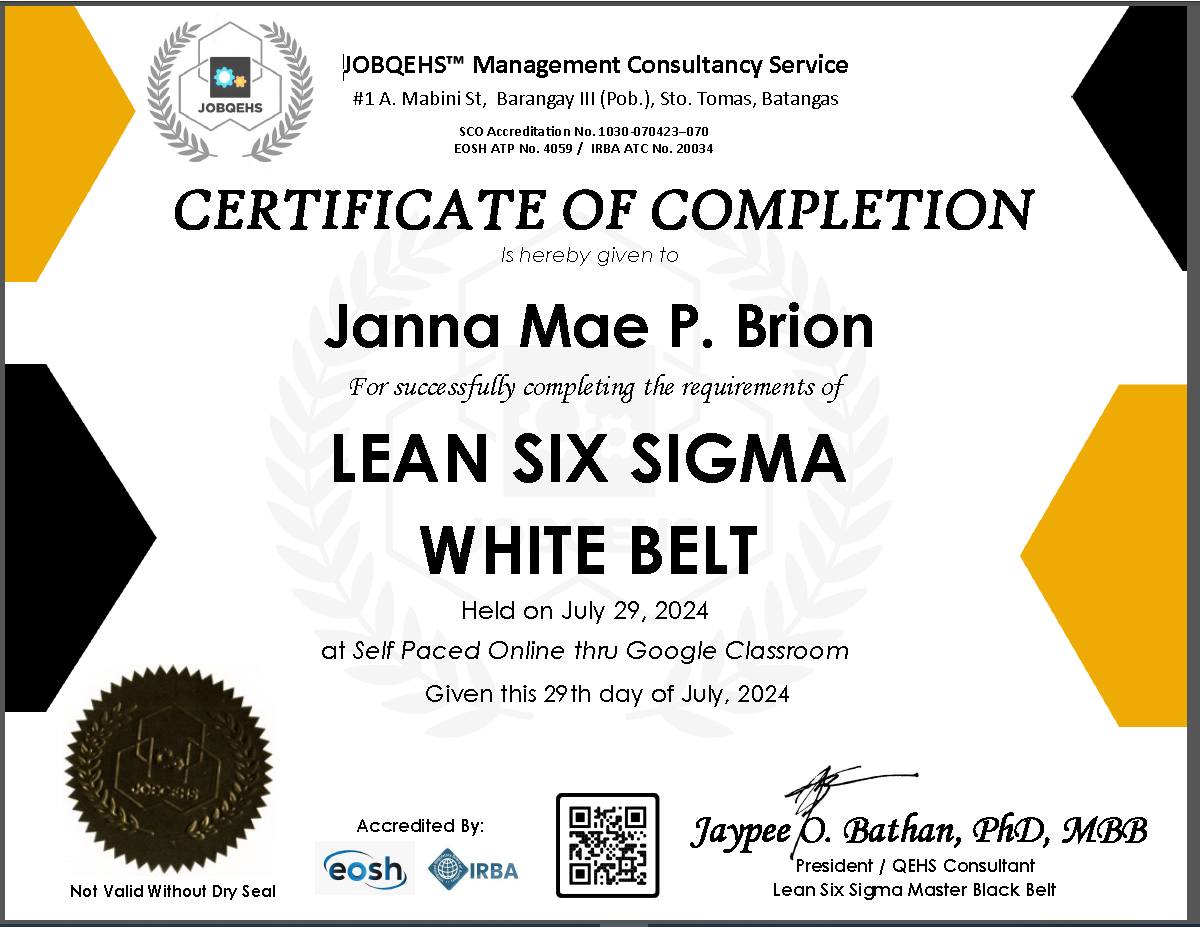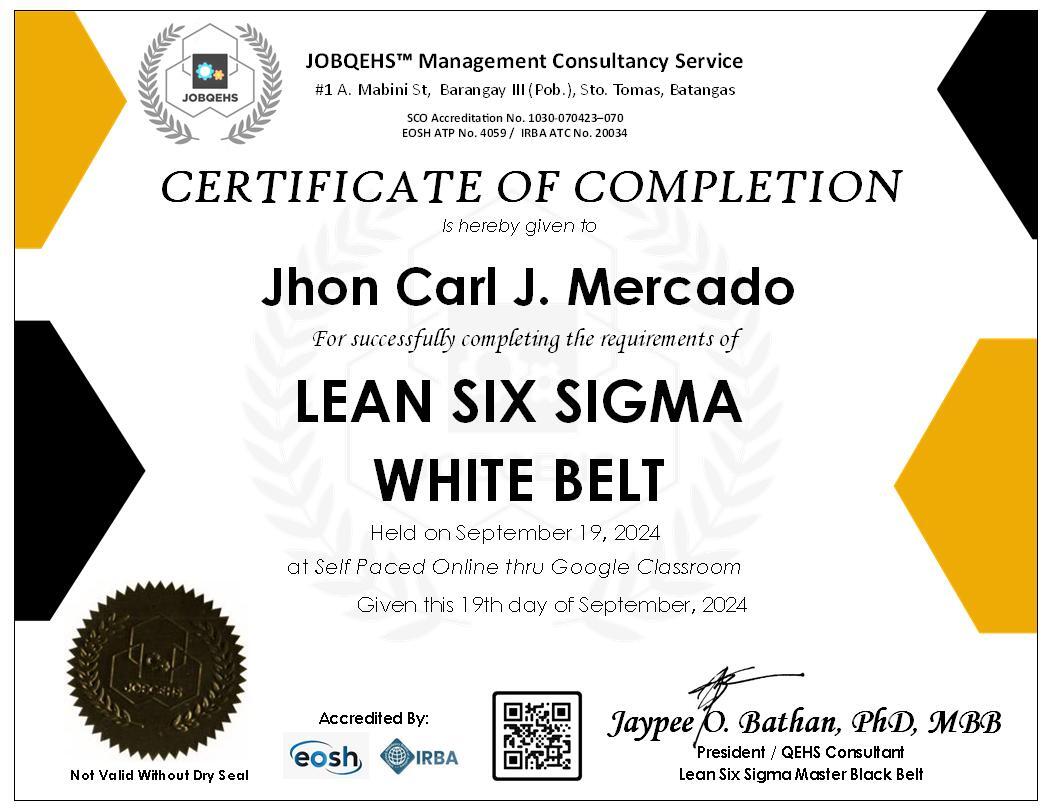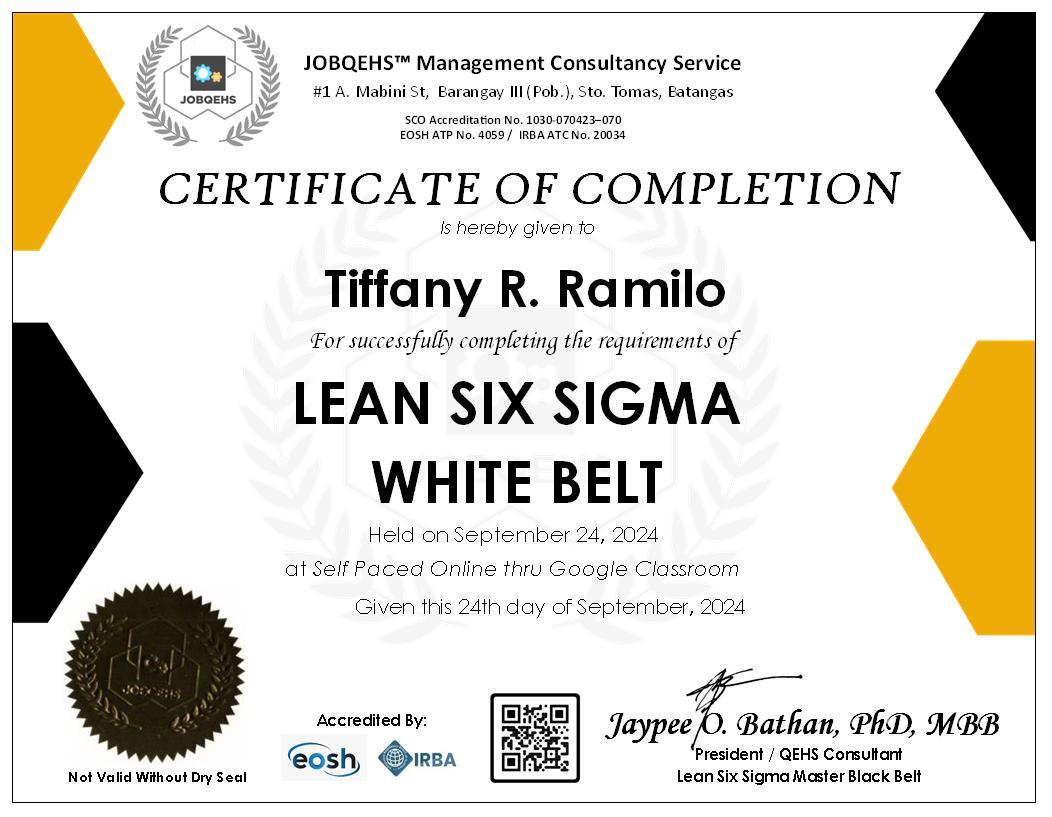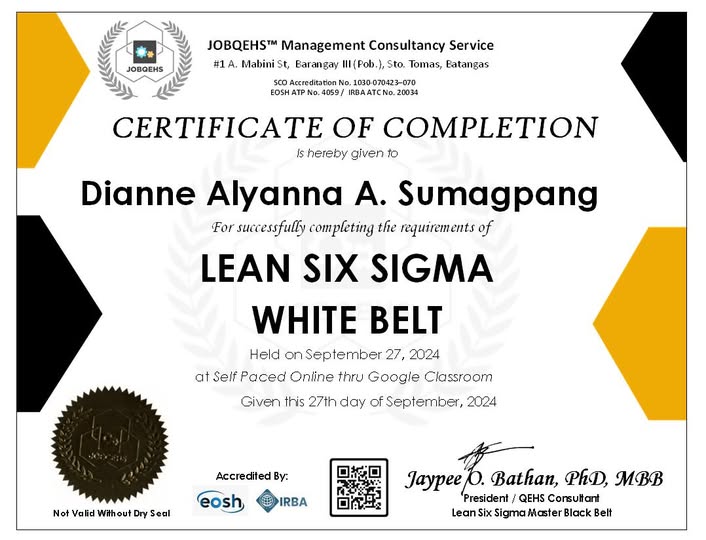Lean Six Sigma White Belt (Online Training)
Here are some key points about Lean Six Sigma White Belt:- Introduction to Lean Six Sigma: White Belt training typically covers the basics of Lean Six Sigma, its history, and its relevance to business process improvement.
- Roles and Responsibilities: White Belt training introduces participants to the roles and responsibilities within the Lean Six Sigma framework. White Belts are often team members who support process improvement projects.
- Foundational Concepts: Participants learn fundamental concepts such as DMAIC (Define, Measure, Analyze, Improve, Control), waste reduction, and the importance of data-driven decision-making.
- Problem-Solving Tools: Basic problem-solving tools, such as process mapping, flowcharts, and the 5 Whys, are often covered in White Belt training.
- Continuous Improvement Culture: White Belt training emphasizes the importance of fostering a culture of continuous improvement within an organization.
- Certification: While the White Belt is the introductory level, some organizations may offer a certification or acknowledgment upon completion of the training.
Lean Six Sigma White Belt (Face to Face Training)
Here are some key points about Lean Six Sigma White Belt:
- Introduction to Lean Six Sigma: White Belt training typically covers the basics of Lean Six Sigma, its history, and its relevance to business process improvement.
- Roles and Responsibilities: White Belt training introduces participants to the roles and responsibilities within the Lean Six Sigma framework. White Belts are often team members who support process improvement projects.
- Foundational Concepts: Participants learn fundamental concepts such as DMAIC (Define, Measure, Analyze, Improve, Control), waste reduction, and the importance of data-driven decision-making.
- Problem-Solving Tools: Basic problem-solving tools, such as process mapping, flowcharts, and the 5 Whys, are often covered in White Belt training.
- Continuous Improvement Culture: White Belt training emphasizes the importance of fostering a culture of continuous improvement within an organization.
- Certification: While the White Belt is the introductory level, some organizations may offer a certification or acknowledgment upon completion of the training.
Lean Six Sigma White Belt (Blended Training)
Here are some key points about Lean Six Sigma White Belt:
- Introduction to Lean Six Sigma: White Belt training typically covers the basics of Lean Six Sigma, its history, and its relevance to business process improvement.
- Roles and Responsibilities: White Belt training introduces participants to the roles and responsibilities within the Lean Six Sigma framework. White Belts are often team members who support process improvement projects.
- Foundational Concepts: Participants learn fundamental concepts such as DMAIC (Define, Measure, Analyze, Improve, Control), waste reduction, and the importance of data-driven decision-making.
- Problem-Solving Tools: Basic problem-solving tools, such as process mapping, flowcharts, and the 5 Whys, are often covered in White Belt training.
- Continuous Improvement Culture: White Belt training emphasizes the importance of fostering a culture of continuous improvement within an organization.
- Certification: While the White Belt is the introductory level, some organizations may offer a certification or acknowledgment upon completion of the training.
Lean Six Sigma White Belt (Hybrid Training)
Here are some key points about Lean Six Sigma White Belt:
- Introduction to Lean Six Sigma: White Belt training typically covers the basics of Lean Six Sigma, its history, and its relevance to business process improvement.
- Roles and Responsibilities: White Belt training introduces participants to the roles and responsibilities within the Lean Six Sigma framework. White Belts are often team members who support process improvement projects.
- Foundational Concepts: Participants learn fundamental concepts such as DMAIC (Define, Measure, Analyze, Improve, Control), waste reduction, and the importance of data-driven decision-making.
- Problem-Solving Tools: Basic problem-solving tools, such as process mapping, flowcharts, and the 5 Whys, are often covered in White Belt training.
- Continuous Improvement Culture: White Belt training emphasizes the importance of fostering a culture of continuous improvement within an organization.
- Certification: While the White Belt is the introductory level, some organizations may offer a certification or acknowledgment upon completion of the training.
Lean Six Sigma White Belt (Self Paced Training)
Here are some key points about Lean Six Sigma White Belt:
- Introduction to Lean Six Sigma: White Belt training typically covers the basics of Lean Six Sigma, its history, and its relevance to business process improvement.
- Roles and Responsibilities: White Belt training introduces participants to the roles and responsibilities within the Lean Six Sigma framework. White Belts are often team members who support process improvement projects.
- Foundational Concepts: Participants learn fundamental concepts such as DMAIC (Define, Measure, Analyze, Improve, Control), waste reduction, and the importance of data-driven decision-making.
- Problem-Solving Tools: Basic problem-solving tools, such as process mapping, flowcharts, and the 5 Whys, are often covered in White Belt training.
- Continuous Improvement Culture: White Belt training emphasizes the importance of fostering a culture of continuous improvement within an organization.
- Certification: While the White Belt is the introductory level, some organizations may offer a certification or acknowledgment upon completion of the training.

